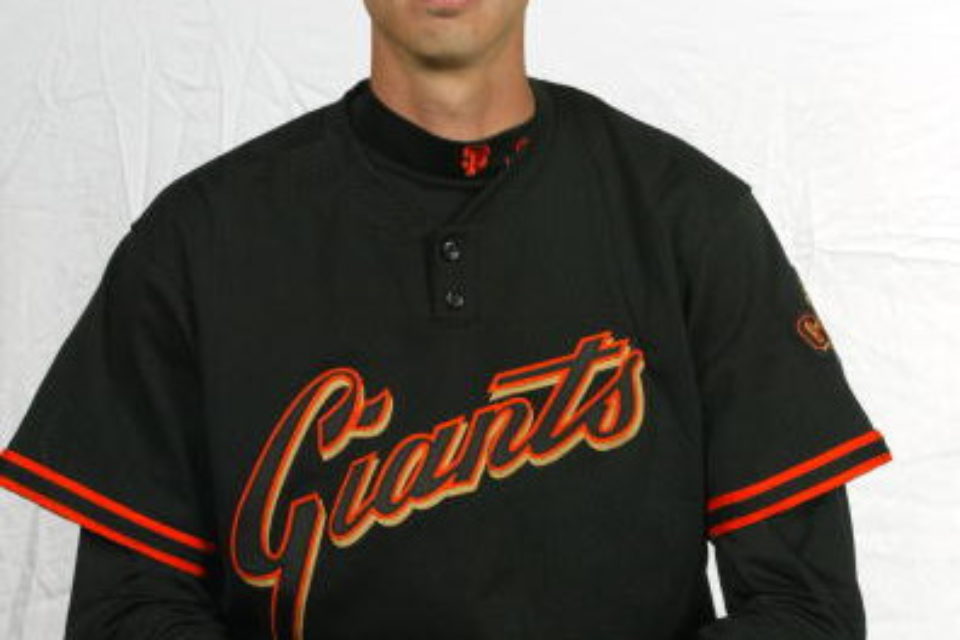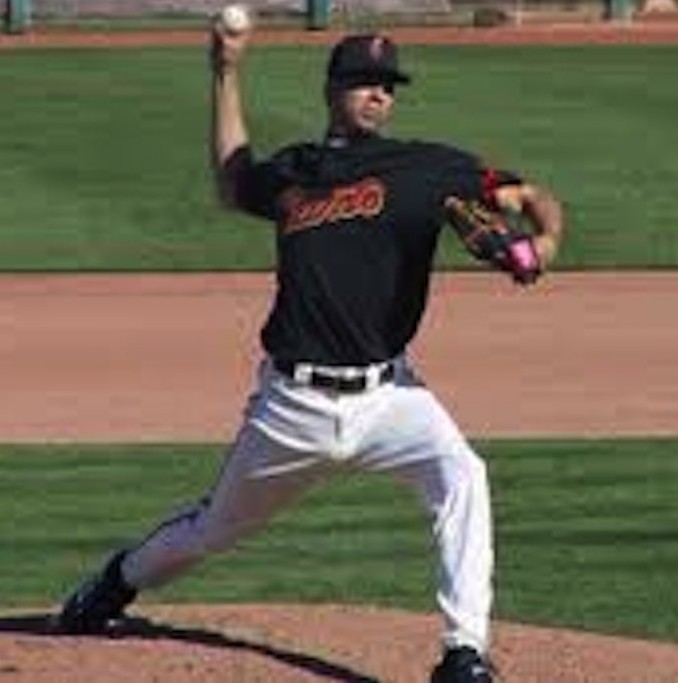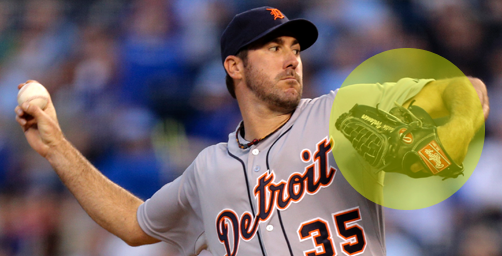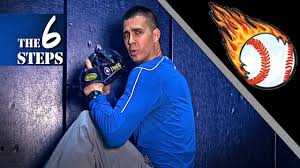ProSwing’s Rafael Rigueiro talks pitching

For many of us surviving summer means watching our kids ride the roller coaster of emotions that comes with playing baseball – the proverbial game of failure. Following last year’s interview about hitting with former Los Angeles Dodger and ProSwing owner Dan Gray, this year we turn to pitching. Here, former San Francisco Giant and pitching instructor at ProSwing, Rafael Rigueiro offers some tips on how to pitch and how to deal with the vicissitudes of stepping on the rubber.
What’s the first thing you tell a kid about pitching?
Relax. Your body should never be tense. Relax your shoulders, arms and hands. Don’t squeeze the baseball. A nice loose grip maximizes the rotation of the ball and will make it travel faster. Be effortless. Take a deep breath between pitches to control your heart rate. Establish and maintain your rhythm of throwing, catching the return ball and throwing again. If you’re getting hit , slow the game down. Make thee hitters wait. Regain control so you maintain the rhythm of the game that is comfortable to you.
What about the mechanics of pitching?
Balance and posture are the keys. It starts with your posture, which affects your arm angle. You should be in an athletic stance. The base of your feet should be shoulder width, back knee slightly bent, upper body over your waist and hips. Then all movements are linear, north and south, like a Ferris wheel – not a merry-go-round. As you go through your motion your elbow and glove are in line with the catcher. You are looking over your tricep with your glove inside your hips and shoulders. Don’t fly open.
Take us through the motion
It’s called the kinetic sequence of pitching. It starts when your front foot lands and moves up the body to the pelvis, then the torso, the arm, the hand and finally the ball. Lift,  stride, land and accelerate. Maintain control of your front foot balance point. Your head and shoulders are over your hips, never leaning back. Use your upper body to get to the release point – nice and easy – and then once your hips start to turn, that’s when you accelerate with a controlled aggressive movement to the plate.
stride, land and accelerate. Maintain control of your front foot balance point. Your head and shoulders are over your hips, never leaning back. Use your upper body to get to the release point – nice and easy – and then once your hips start to turn, that’s when you accelerate with a controlled aggressive movement to the plate.
What’s the hardest part of the motion to master?
Coordinating your upper and lower half. Make sure your head and shoulders are over your hips throughout your motion – never behind. We don’t want the glove side to yank outside your shoulders making it difficult to hold your posture. This affects the head position and arm angle making you fly open and then it’s tough to throw strikes. A good drill is to stand in a wide stance with your front foot open at a 45 degree angle and work on rotating the hips and letting the hips bring the arm around.
What can kids do to develop arm strength?
Long toss and training. Have a catch, four or five times a week. Twice a week work in some long toss. Break it down into five stations: 30, 60, 90, 120 and 150 feet. Five throws at each station going out and coming back. When kids get older they have to train. Use bands and 2 or 3 pound weights. Strengthen all the pieces of the shoulder, forearm, wrist and hand. Do it for both arms to maintain balance. Not just your pitching hand. Do hand exercises in a bucket of rice. And do a rotator cuff program. They can look up these exercises on the Internet. Then build your core and legs to help stabilize the upper body. And run, run, run. When I played with the Giants we had to run and do an ab routine everyday.
How do you take care of your arm?
Ice your arm after you pitch. Even after as little as 30 or 40 pitches. 15 minutes on the elbow and 20 minutes on the shoulder. Use a zip lock bag with crushed ice and make sure there is no air in the bag. Wrap it tight with Saran wrap or an ace bandage. If it’s just lying on there it’s not enough. When I was young I had a rubber arm. I could throw forever without pain. One day when I was with the Giants I felt soreness for the first time. I got Tommy John surgery and then a labral tear and my career was over. Don’t wait till your arm hurts to practice proper arm care.
What about pitch count?
Start with a couple of innings. Then two days rest. For Little League 40 pitches is good. Even in middle school 60 pitches or three innings is a good ceiling. High schoolers  can go 80, college 100 pitches. They used to say that 120 pitches was the ceiling in the Major League but you seldom see pitchers going more than 100-110. But coaches need a more holistic approach than pitch count. At any level if a kid has to throw 35 pitches in an inning, he could be done right there.
can go 80, college 100 pitches. They used to say that 120 pitches was the ceiling in the Major League but you seldom see pitchers going more than 100-110. But coaches need a more holistic approach than pitch count. At any level if a kid has to throw 35 pitches in an inning, he could be done right there.
How do you know when a pitcher is done?
You can see it in their body language and the look in their eyes. The shoulders may drop. The head drops. The stride gets smaller and the arm motion slows. Are the hitters taking better swings and making better contact? Swings and misses turn into foul balls. Fall balls become line drives. A good coach doesn’t wait for the results to make a pitching change, he takes his cues from the pitchers body language and mechanics. Fatigue puts pitchers in compromised positions. They start using their arms more than their legs and that’s when they hurt their arms.
And lose confidence …
At every level, coaches should be thinking about player development more than championships. And beyond mechanics, building confidence is the key. Stretching a pitcher at a young age doesn’t help. Most kids can’t separate the three good innings they pitched from the fourth inning where they lost the game. Take the three good innings and go to the bullpen. You’ll have a better pitcher out there the next time.
How do you build a kids confidence?
First put your pitchers in a position to succeed. Don’t set them up for failure. Kids should practice visualization. Picture yourself going through the perfect pitching motion and striking out the side. Still, kids will fail. The team and coach has to pick them up. Tip your hat to the batter if he gets a big hit. Sometimes your failure is just his success. Parents, let the kid decompress on the ride home. Remember it’s not about the results. It’s about trying to enjoy the game, learning how to compete and how to keep an emotional balance – skills that everybody needs for all aspects of their lives. For one kid in a 100,000, Little League baseball is preparing them for the show. For the rest of us it’s about learning how to give it a try, learning that life is about winning and losing and learning how to deal with that.
 Rafael Rigueiro was drafted by the San Francisco Giants in the 2000 MLB Amateur Draft. He played in their minor league system for four years. In his best season he won 5 games and lost 3, pitching 96 innings with a 3.19 ERA and a 1.167 WHIP for the Hagerstown Suns. Rafael is a pitching instructor at ProSwing in Mt. Kisco.
Rafael Rigueiro was drafted by the San Francisco Giants in the 2000 MLB Amateur Draft. He played in their minor league system for four years. In his best season he won 5 games and lost 3, pitching 96 innings with a 3.19 ERA and a 1.167 WHIP for the Hagerstown Suns. Rafael is a pitching instructor at ProSwing in Mt. Kisco.
See his YouTube video on the six steps of pitching here:






















